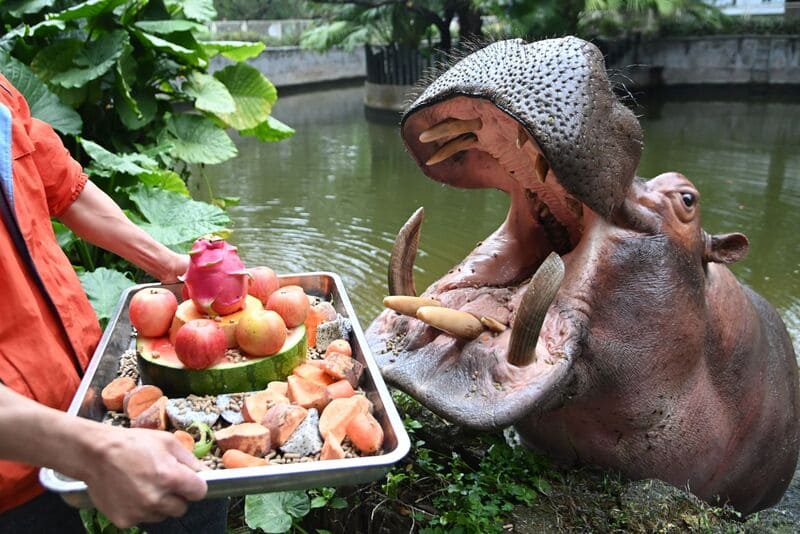Hippopotamuses, or hippos for short, are among the most iconic and intriguing large mammals of Africa. Despite their massive size, semi-aquatic lifestyle, and intimidating appearance, hippos have a surprisingly simple and herbivorous diet. As a zoologist, I aim to demystify the eating habits of these unique animals by exploring their natural feeding behavior, dietary preferences, digestive adaptations, and their role in the ecosystem.

Hippos (Hippopotamus amphibius) are primarily herbivorous animals. They consume almost exclusively plant material and have a digestive system adapted to process high-fiber vegetation. However, there have been rare reports of hippos scavenging meat, though this behavior is considered abnormal.
Adult hippos eat approximately 35–45 kg (75–100 pounds) of vegetation each night, though they can eat more depending on availability and body condition.
Hippos primarily graze on short grasses found on land. Their favorites include:
Bermuda grass
Cynodon species
Short savanna grasses They prefer grazing at night when temperatures are cooler, leaving their water habitat to forage on land.
While grass is the staple, hippos may occasionally consume:
Fallen fruit (rare)
Aquatic plants (limited intake)
Crop plants like maize or sugarcane (when near agricultural land) These additions are not a major part of their diet but may occur due to habitat overlap with human activity.
Hippos typically leave their water habitat at dusk and travel up to 10 kilometers (6 miles) to feeding grounds. They feed for 4–6 hours during the night before returning to water at dawn.
Males often dominate prime feeding areas and may become aggressive to protect access to preferred grazing spots.
Hippos use their muscular lips to pluck grass rather than tearing it with their teeth. Their large tusk-like canines are not used for feeding but rather for fighting and defense.
Though not true ruminants like cows, hippos have a three-chambered stomach that allows for partial fermentation of fibrous material. This helps them extract nutrients from tough plant material.
Due to their slow metabolism and the fibrous nature of their food, hippos take a long time to digest their meals. They may not feed every day if they have consumed enough the previous night.
Despite spending most of their time in water, hippos do not feed while submerged. Their aquatic habitat provides safety, thermoregulation, and breeding grounds—but their meals are strictly terrestrial.
Hippos lack the anatomical adaptations needed to efficiently graze underwater. Their eyes, ears, and nostrils are adapted for surface observation, not submerged foraging.
Though rare, hippos have been observed consuming carrion, including dead animals or even preying on smaller mammals or fish during droughts. This behavior may result from severe nutritional stress or social competition.
These instances are exceptions and not representative of typical hippo diets. Hippos do not have the dentition or digestive system suited for meat consumption.
In areas near farmlands, hippos may feed on:
Sugarcane
Corn
Rice paddies This can lead to human-wildlife conflict, especially when hippos damage crops or become aggressive toward farmers.
Efforts to reduce crop raiding include:
Electric fencing
Night patrols
Designated wildlife corridors Balancing conservation and agriculture is vital in regions where hippos and humans coexist.
By feeding selectively on grass species, hippos influence the structure and composition of savanna ecosystems.
Hippos play a crucial role in nutrient cycling by transferring nutrients from land (grazing) to water bodies through their dung. This supports aquatic biodiversity.
Though hippos may eat only a few types of food, their feeding habits have significant ecological implications. As largely nocturnal grazers, they serve as ecosystem engineers, shaping both terrestrial and aquatic environments.
Understanding what hippos eat not only sheds light on their biology but also informs conservation efforts and conflict resolution in shared habitats. These river giants may have a simple diet, but the impact of their meals reaches far and wide.
animal tags: hippos
We created this article in conjunction with AI technology, then made sure it was fact-checked and edited by a Animals Top editor.